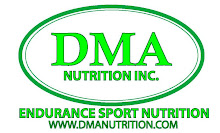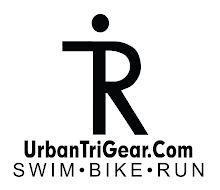Lets take a few minutes to explore the history of hydration and endurance sports. The below discussion is based off a paper by Dr. Timothy Noakes, who is professor of Exercise and Sports Science at the University of Cape Town and a leading authority in the discipline exercise physiology.
Believe it or not, prior to 1969, runners who were competing in marathons were advised against drinking during exercise and accepted recommendations for cyclists were “avoid drinking when racing, especially in hot weather. Drink as little as possible, and with the liquid no too cold. It is only a question of will power. When you drink too much you will perspire, and you will lose your strength… Four small bottles for a long stage (of the Tour de France), it is frowned upon to drink more.” The thing that is most amazing about this- there is NO published data that shows in either case, that the athletes performance suffered. In a book titled “Racing the Antelope,” Bernd Heinrich put forth: humans have evolved specifically to undertake prolonged exercise in the heat: “the fact that we, as savannah-adapted, animals have such hypertrophied sweating responses implies that, if we are naturally so profligate with water, it can only be because of some very big advantage. The most likely advantage was that it permitted us to perform prolonged exercise in the heat… What we do need sweating for is to sustain running in the heat of the day- the time when most predators retire to the shade.”
Noakes puts forth: since early humans likely ran in condition in which water was scarce, it seems highly probably that this evolving capability must also have included the capacity to preserve water stores and to resist the adverse consequences of developing a water deficit.
In 1977, Wyndham stated: “Dehydration materially affects the ability of the human body to regulate body temperature. This is well shown in studies in my laboratory. Those runners who drank sufficient water to keep their dehydration <3% of body mass had rectal temperature of around 38.5oC (101.3o F) at the end of a 30km race… in those who did not… there was a significant positive correlation between increasing rectal temperature and the extent of dehydration.”
Later that year, Costill put forth “In general, it seems that the large sweat losses incurred during training and marathon competition are adequately tolerated by the runner, with concomitant adjustments in the water and electrolyte distributions of the runner’s body fluid compartments.”
There were two significant events that stimulated new guidelines for fluid ingestion during endurance exercise:
1. The development of sports drinks with the goal of “replacing fluids that were lost due to sweating, which would cause a loss of circulating blood that would adversely affect the ability of the body to dissipate heat.“
2. The aforementioned work by Wyndham that implied “dehydration from sweating places humans at risk of heat stroke unless they drink sufficiently to maintain <3% and especially <5-6% dehydration during exercise.”
In 1992, Montain and Coyle presented work that was widely interpreted as proof that athletes who do not drink at sweat-replacement rates during exercise are at a disadvantage since they finish with a slightly higher body temperature and heart rate.
All of the aforementioned work lead to the 1996 American College of Sports Medicine (ACSM) to issue new guidelines:
1. Individuals should be encouraged to consume the maximal amounts of fluids during exercise that can be tolerated without gastrointestinal discomfort up to a rate equal to that lost from sweating, without reference to the dictates of thirst to optimize an athletes performance and minimizes their risks of ill health.
2. “It is clear that perception of thirst, an imperfect index of the magnitude of fluid deficit, cannot be used to provide complete restoration of water lost by sweating. As such, individuals participating in prolonged intense exercise must rely on strategies such as monitoring bodyweight loss and ingesting volumes of fluid during exercise at a rate equal to that lost from sweating, i.e. bodyweight reduction, to ensure complete fluid replacement.
3. The fluid intake range of 600-1200 mL/hour given in reference to maintaining a steady source of glucose during prolonged exercise.
Two major issues with the ACSM’s guidelines are they are not taking into account the number of slower athletes who take the time to ingest large volumes of fluids and that they are blanket guidelines for the rates of fluid replacement for all athletes regardless of gender, mass, surface area, level of fitness, acclimatization, sweat rate, intensity of exercise and environmental conditions in which they exercise.
The science behind these assumptions made by the ACSM has some flaws, which are:
• The 1992 study by Montain and Coyle did not measure the effects of drinking at different rates and how that impacted exercise performance.
• The studies have not taken into account the effects of the eight penalty incurred on performance
• None of the studies have been compared to the usual practice of drinking ad libitum (free drinking to personal thirst satisfaction).
In a review of the currently published research shows that drinking ad libitum produces at least equivalent outcomes to drinking to replace all the weight lost as sweat.
Another erroneous conclusion is that when an athlete who has lost eight during exercise collapses, then the weight loss (dehydration) must have caused the collapse. The problem is, most athletes who do not collapse during exercise have also lost weight and are also dehydrated. Therefore, dehydration cannot be the exclusive cause of collapse.
A 2004 study by Sharwood (Weight changes, medical complications, and performance during an Ironman triathlon) has provided NO evidence that those who finish prolonged exercise with the highest degree of weight loss are at the greatest risk of illness in ironman triathlons. Instead, the studies have consistently shown that athletes who lose the most weight during triathlons finish faster than those who lose little or gain weight.
Maintenance of body weight is not the only variable that is physiologically regulated during exercise. Perhaps a more important physiological variable that is regulated is fluid balance to ensure a constant plasma osmolality before, during and after exercise. The mechanism that controls plasma osmolality is the thirst mechanism, which is triggered to ensure the regulation of plasma osmolality.
With that being said, Noakes recommends that: “slower athletes need only to be advised to drink according to the dictates of their thirst during exercise, but not to ignore thirst. When athletes drink according to thirst, the risk that they will over-drink and so develop exercise-associated hyponatraemia is minimized and there is no evidence that they are at any significant disadvantage from the 3-5% level of dehydration that they develop as a result.
So what does this mean to you? In endurance sport events that last longer than 1.5 h ours, carbohydrate (CHO) replacement becomes important. As we get up to the 4+ hour mark (marathon, half-ironman, ironman and ultra-distance events), CHO replacement becomes essential to maintain performance. A normal source of CHO during endurance sports is in the form of a sports drink due to the ease of ingestion while moving. So there is a fine line between drinking to thirst, while still taking in enough calories. The take home message is, drinking to thirst (ad libitum) is the way to hydrate during endurance sports as long as you have a nutritional plan to consume enough calories to sustain your performance.
Noakes TD. Hydration in the Marathon. Sports Med 2007; 37 (4-5): 463-466
Thursday, July 23, 2009
The History of the Science of Hydration and Human Beings
Subscribe to:
Post Comments (Atom)












.jpg)



No comments:
Post a Comment